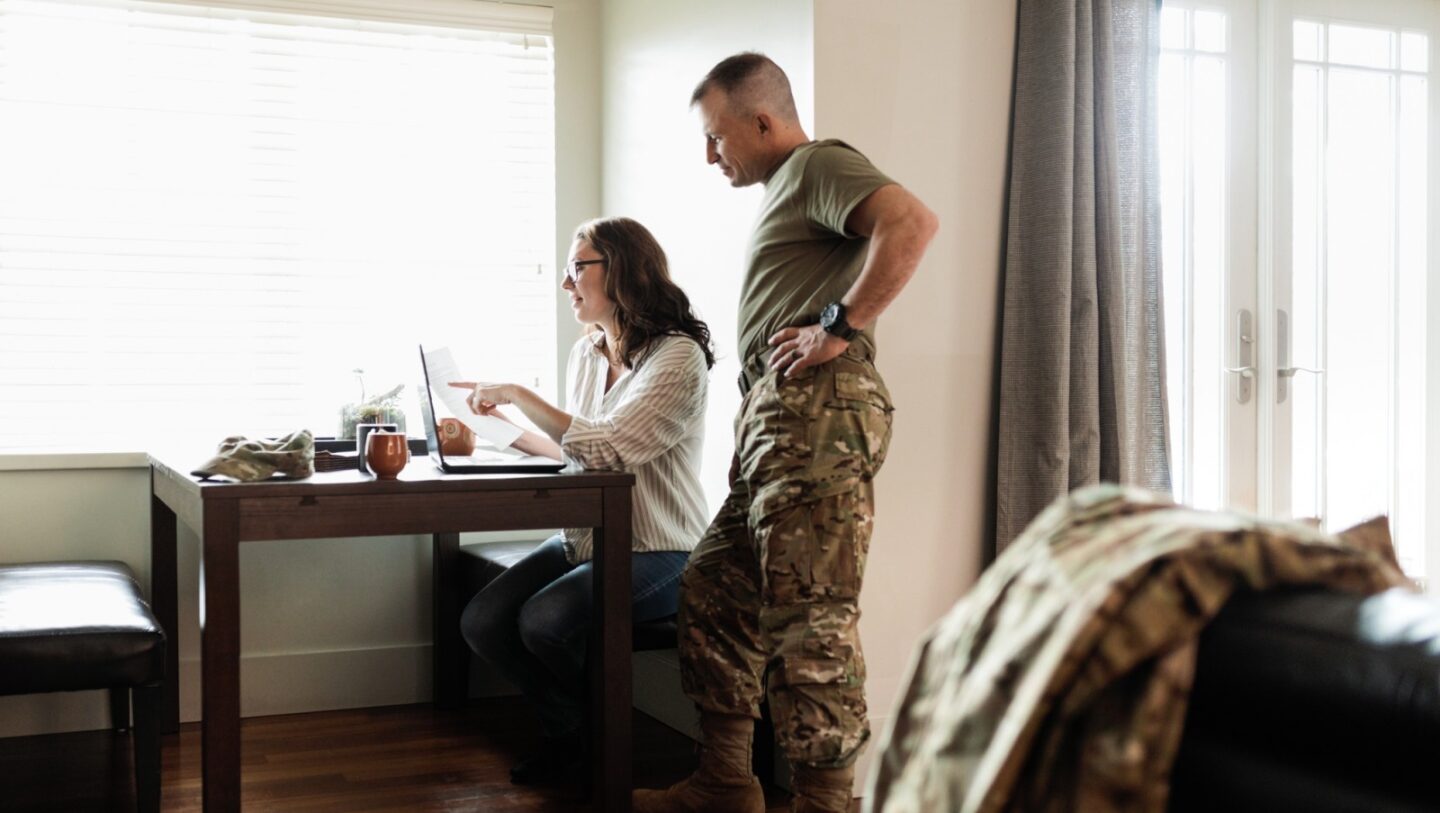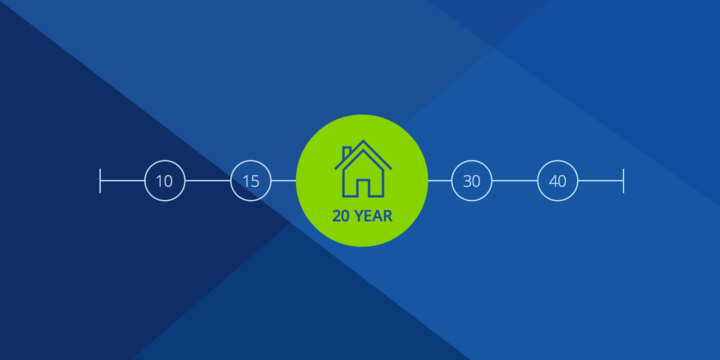What Is a VA Funding Fee?
Current or past members of the U.S. military can finance up to 100 percent of their home purchase with a VA loan that has no mortgage insurance or prepayment penalties.


Written by Tali Bendzak on July 29, 2022
For qualifying military members and veterans, a VA loan can offer great benefits — including below-market interest rates, low- or zero-down payment options and no mortgage insurance premiums.
To maintain these perks, the U.S. Department of Veterans Affairs (commonly known as the VA) requires a one-time VA funding fee that is either paid at closing or rolled into your loan amount. The funding fee may vary based on your type of VA loan, usage and down payment amount. There are also some exemptions that allow you to waive the funding fee altogether. Here’s what you need to know about VA funding fees.
What is the funding fee for a VA loan?
A funding fee is a one-time payment made to the VA when you open a new VA loan. It may be paid upfront at closing or financed into your loan. The fee helps keep the VA loan program running, so the government can continue to offer a wide range of benefits to military service members.
Curious what your total home mortgage costs might look like? Use Zillow’s VA Loan Calculator to get an estimate.
How much is the VA funding fee?
The VA funding fee ranges between 0.5% and 3.6% of the loan amount. Your individual cost may vary based on your down payment amount, loan type and service status. Some types of VA loans have a higher funding fee if you’ve used your VA loan benefit before. On purchase and construction loans, making a larger down payment is the best way to lower your funding fee.
See a full list of VA funding fees in the chart below.
VA funding fee vs PMI
A VA funding fee is not the same as private mortgage insurance (PMI). PMI is a type of mortgage insurance you pay monthly to borrow money from a lender when you have a down payment of less than 20% on a conventional loan. Mortgage insurance protects the lender in case you default on your loan.
A funding fee is a one-time cost paid to the VA on all VA-backed loans to support the loan program. VA loan borrowers do not pay for PMI, and conventional loan borrowers do not pay a VA funding fee. With no PMI requirements on VA loans, you don’t have to worry about saving for a down payment. However, by saving a down payment of at least a 5% for a VA purchase loan your funding fee will be either 0.65% or 1.95% less than if you had no down payment at all.
VA funding fee charts
Use the tables below to see current VA funding fee rates for veterans, active-duty service members and National Guard and Reserve members. These rates are the most current from the VA, as of January 1, 2020.
VA purchase and construction loans
| Down Payment amount | First-time use funding fee | Subsequent use funding fee |
|---|---|---|
| Less than 5% | 2.3% | 3.6% |
| 5% or more | 1.65% | 1.65% |
| 10% or more | 1.4% | 1.4% |
VA refinance loans
| Loan type | First-time use funding fee | Subsequent use funding fee |
|---|---|---|
| VA Cash-Out Refinance | 2.3% | 3.6% |
| Interest Rate Reduction Refinancing Loan (IRRRL) | 0.5% | 0.5% |
Other VA loan types
| Loan type | Type of use | Funding fee |
|---|---|---|
| Native American Direct Purchase Loan (NADL) | Purchase, construct or improve a home on Federal Trust land. | 1.25% |
| Native American Direct Refinance Loan (NADL) | Refinance an existing NADL for a new NADL with a new rate and term. | 0.5% |
| Manufactured home loan | Purchase a manufactured home that is not on a permanent foundation or considered a single-family home. | 1.0% |
| Loan assumptions | A borrower takes over the terms of an existing mortgage, even if they’re not a veteran or active duty service member. | 0.5% |
| Vendee loan | Purchase a VA Real Estate Owned (REO) property. | 2.25% |
Do you qualify for a VA funding fee exemption?
Some veterans may be able to have their funding fee waived. Be sure to speak with a VA lender to see if you qualify for a funding fee exemption. Here are the most common reasons you may be able to waive your VA funding fee.
- If you receive VA compensation for a service-connected disability
- If you’re eligible for VA compensation for a service-connected disability but are receiving retirement or active-duty pay instead
- If you’re a surviving spouse of a veteran who died in service or from a service-connected disability, or was totally disabled, and you’re receiving Dependency and Indemnity Compensation (DIC)
- If you’re a service member with a proposed or memorandum rating, before the loan closing date, saying you’re eligible to get compensation because of a pre-discharge claim
- If you’re a service member on active duty who before or on the loan closing date provides evidence of having received the Purple Heart
Are you eligible to receive a VA funding fee refund?
If you’re later awarded VA compensation for a service-connected disability, you may be eligible for a refund on your VA funding fee. The effective date of the disability must be retroactive to before the date of your loan closing. Contact your VA Regional Loan Center for more information.
How is the VA funding fee paid?
Your VA funding fee is due at closing. You can pay the fee in cash or finance it into your total loan amount. Another option is to ask the seller to pay your VA loan closing costs (including the VA funding fee) as part of seller concessions. Note: the seller can’t pay more than 4% of the loan amount in closing costs.
Here’s an example. You are regular military personnel buying a $250,000 home with 100% financing. You’re using a VA loan for the first time, so your funding fee would be 2.3%, or $5,750. You can either pay this fee upfront at closing, or tack it on to your total loan amount, financing $255,750.
Do you pay a VA funding fee on a refinance?
Yes, you are required to pay a VA funding fee on a refinance that uses a VA loan. VA cash-out refinance loans have a set funding fee of 2.3% for first use and 3.6% for your subsequent use. VA Interest Rate Reduction Refinancing Loans (IRRRL) have a set funding fee of 0.5%. The VA funding fee percentages stay the same regardless of your down payment amount.
Is the VA funding fee tax deductible?
If you itemize your taxes, the VA funding fee is tax-deductible. Be sure to ask your tax professional for more details.
Additional VA loan fees paid at closing
When opening a VA loan, you will likely have to pay closing costs in addition to the funding fee. What makes VA loans unique is that the VA limits the amount of fees you're able to be charged at closing. For example, your lender can only charge 1% of the loan amount in origination fees, which may include a processing fee, an appraisal fee, attorney fees, recording fee, title fees and taxes. According to Consumer Financial Protection Bureau, the average origination costs on a VA loan were $1,402 in 2021 and the total average closing costs were $8,391.
Tags
Explore VA mortgage lenders
Zillow makes it simple to explore your VA home loan benefits.
Zillow Group Marketplace, Inc. NMLS #1303160
Find a lender now


